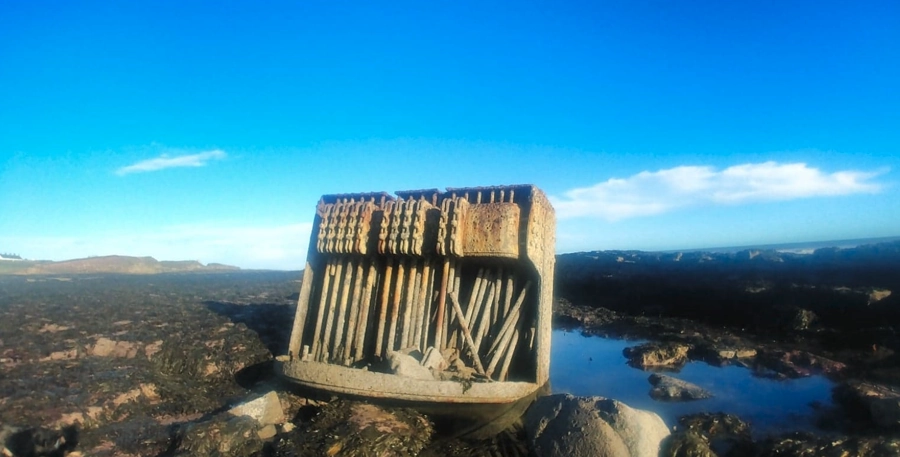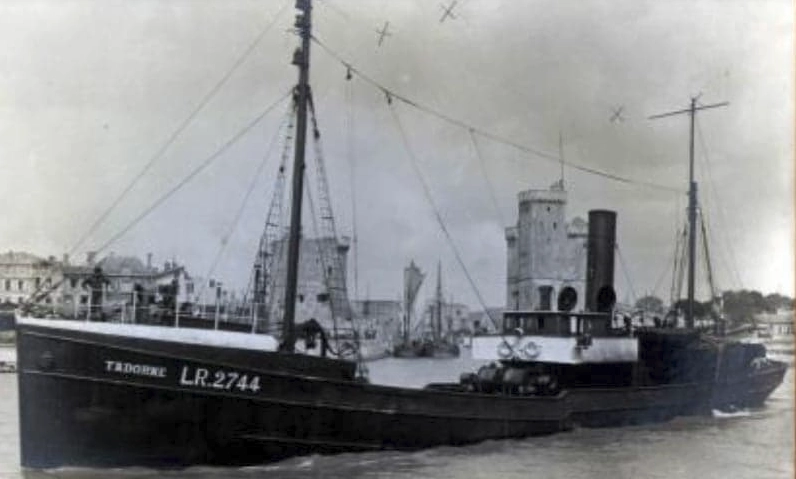By Crasterfarian
Many of you will have spent a wonderful afternoon walking between the villages of Boulmer and Craster or vice versa. It’s a gorgeous stretch of coastline talking in many different types of habitat, terrain, geology, history, plants and wildlife.
The route passes the Great Whin Sill, down from Craster via Cullernose Point, the Bathing House, Rumbling Kern, Howick Haven, the Burn and Sugar Sands and Howdiemont Sands, all the way to the natural harbour at Boulmer Haven.
Many of you will have also wondered what the large oval shaped metal object is, clad in its coat of barnacles and seaweed, that protrudes from water just to the North of Howick Haven as the tide ebbs back.

Well, it’s a boiler, a steam engine boiler, or to be exact, a Scotch Marine Boiler.
The boiler, and some of the ships lower platework, is all that physically remains of a tragedy that fate played here out in the early morning of the 29th of March 1913.
Well, it’s a boiler, a steam engine boiler, or to be exact, a Scotch Marine Boiler. The boiler and some of the ship’s lower plate work is all that physically remains of a tragedy that fate played out here, in the early morning of 29th March 1913.

French trawler Tadorne was making her way from Boulogne to the Icelandic fishing grounds with a crew of 30 men when a blanket of thick fog descended upon the coast making navigation impossible.
She ran aground at 4am just to the north of the Haven at Howick in very stormy seas.
Considering her distance from the shore it must have been around mid-tide when she met her fate on the jagged rocks of Howick.

The alarm was raised by Thomas Thompson of Howick Seahouses Farm after he had heard the cries of the trawlermen from his farm overlooking the Haven at Howick.
The Coastguard from Craster made their way to the scene, arriving at around 7am and tried to set up a breeches buoy. This is where a rocket carrying a thin line is fired from the shore over to the ship allowing a larger rope to be pulled between an anchor point on the shore and a sturdy fixed point on the vessel. A pulley system is set up and each crewmember of the boat wait their turn to sit in the breeches and be pulled to safety by the shore crew.
Unfortunately, the line was unable to be made fast to the vessel due to the sailors freezing hands and numb fingers. One of the Craster men described the sea being so big that ‘it nearly broke our backs’.
The alarm had also been raised at Boulmer RNLI lifeboat station by a driver sent from Howick Hall by Earl Grey.

Their boat, the Arthur R Dawes, a 35-foot Rubie Class Lifeboat, was launched in terrible conditions to make the 2-mile journey, under oar, to the scene.
In an open decked lifeboat with a lot of space is taken up by oarsmen, meaning she had to make the perilous journey twice between the ship and the shore. We are not sure where the lifeboat landed the stricken men but it must have been nearby, maybe at Howick Burn where there is some shelter from the sea.
Imagine rowing in a heavy, wooden, open decked vessel, in big seas….
The gallant crew of the lifeboat rescued 25 of the French hands.
Whilst waiting for the lifeboat to arrive, two of the trawler’s crew made an attempt to swim for the shore, neither of them made it. One of these men was Pierre Archenoux, he broke his leg during his attempt to save himself and perished in the crashing surf from exhaustion. His sea chest was later found in the sea and returned to his widow in Cancale by Countess Grey.
A further two of the crew had died from exposure after lashing themselves to the rigging. One of these was a cabin boy aged 16. The last casualty succumbed to the cold and perished on the journey to the shore in the lifeboat.
Earl Grey, Countess Grey and many of the local residents gave them warm blankets and as much comfort as they could, taking them in, feeding and clothing them. Earl Grey had a French maid at the time who acted as an invaluable translator.
Most of the trawler was salvaged for her steel. All that remains is the boiler and some of her lower platework. I wonder how much of that steel was re-used and ended up cast into ordinance to be exploded on French soil in the coming war…


The five lost souls were subsequently interred in a single plot at the tiny church of St Michael and all the Angels in Howick Hall gardens.
It’s a beautiful little church and well worth a visit, although you must use the main entrance to the gardens and pay the admission fee to do so. Their simple grave has the flowing inscription around the edging stones
THIS CROSS IS PLACED HERE BY THE PEOPLE OF HOWICK BOULMER AND CRASTER IN MEMORY OF FIVE FRENCH SAILORS WHO OUT OF A CREW OF 30 WERE DROWNED IN THE WRECK OF THE FRENCH STEAM TRAWLER FR TADORNE OFF THE ROCKS AT HOWICK BOAT HOUSE ON MARCH 29 1913.
The French Government awarded a Gold Medal to William Stephenson, the Coxswain of the Boulmer Lifeboat, and money and grants were distributed to the crew for their gallantry. There were 14 men crewing the lifeboat that day comprising of eight members of the Stanton family and six members of the Stephenson family. They were given their awards in Newcastle at the French Consulate by Baron de Balabre.
Boulmer still has a lifeboat. However, it is now funded privately and run by volunteers and is not affiliated with the RNLI. After the RNLI withdrew their boat from service in 1967, the good folk of Boulmer raised the cash to buy and support their own boat and continue to do so to this day.
A Poignant Symbol

One of the most striking wildfowl birds we have on our Northumbrian Coast is the shelduck. Its large shape and striking colours brighten the dullest of winter days. It’s a permanent resident here, as are the five souls of the Tadorne, which, translates from French, as ‘shelduck’.
So next time you’re walking the coast between Boulmer and Craster, remember the lost souls of the Tadorne and the bravery of the volunteers from the villages of Boulmer, Howick and Craster, who risked it all to save them.
With love from the Crasterfarian XX


